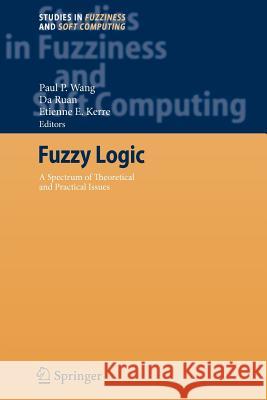Fuzzy Logic: A Spectrum of Theoretical & Practical Issues » książka
Fuzzy Logic: A Spectrum of Theoretical & Practical Issues
ISBN-13: 9783642090332 / Angielski / Miękka / 2010 / 459 str.
Fuzzy Logic: A Spectrum of Theoretical & Practical Issues
ISBN-13: 9783642090332 / Angielski / Miękka / 2010 / 459 str.
(netto: 549,49 VAT: 5%)
Najniższa cena z 30 dni: 574,29 zł
ok. 20 dni roboczych.
Darmowa dostawa!
In order to properly characterize the content of this book, it is important to clarify ?rst the intended meaning of its title Fuzzy Logic. This clari?cation is needed since the term "fuzzy logic," as currently used in the literature, is viewed either in a narrow sense or in a broad sense. In the narrow sense, fuzzy logic is viewed as an area devoted to the formal development, in a u- ?ed way, of the various logical systems of many-valued logic. It is concerned withformalizingsyntactic aspects(basedonthenotionofproof)andsemantic aspects (based on the notion oftruth) of the variouslogical calculi. In order to be acceptable, each of these logical calculi must be sound (provability implies truth) and complete (truth implies provability). The most representativep- lication of fuzzy logic in this sense is, in my opinion, the classic book by Peter Hajek 1]. When the term "fuzzy logic" is viewed in the broad sense, it refers to an extensive agenda whose primary aim is to utilize the apparatus of fuzzy set theoryfordevelopingsoundconcepts, principles, andmethodsforrepresenting and dealing with knowledge expressed by statements in natural language. Although workin fuzzy logicin the broadsense is not directly concernedwith the issues that are investigated under fuzzy logic in the narrow sense, the importance of the latter is that it provides the former with solid theoretical foundations. After examining the content of this book, it is easy to conclude that its title, FuzzyLogic, referstofuzzylogicinthebroadsense. Thisisconsistent, by and large, with the usual meaning of the term "fuzzy logic" in the literature.











